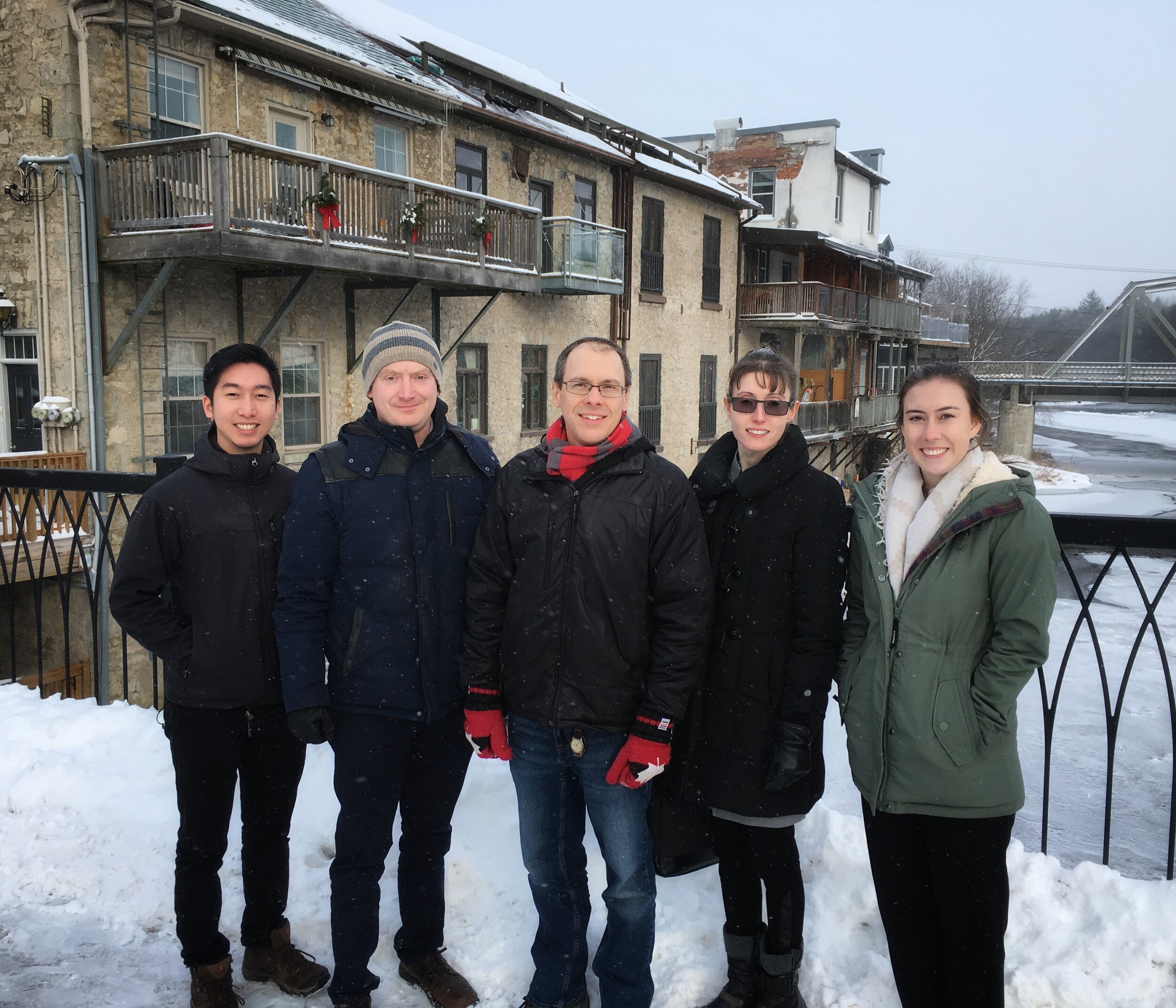Publication: Lyme Disease Frontiers: Reconciling Borrelia Biology and Clinical Conundrums
Open Access (free download): Lyme Disease Frontiers Article
Authors: Vladimir V. Bamm, Jordan T. Ko, Iain L. Mainprize, Victoria P. Sanderson, and Melanie K. B. Wills (all from G. Magnotta Lyme Disease Research Lab)
What: This literature review examines many concepts in fundamental and clinical microbiology and host biology that impact the presentation and progression of Lyme disease. It is published in the Journal Pathogens as part of their special issue, “Pathogenesis of Fungal and Bacterial Microbes”.
Who: Our team of experimental (“bench”) research scientists in the G. Magnotta lab jointly authored the paper. This includes graduate students, senior research associates, and the lab director, making this the first home-grown G. Magnotta initiative in press.
Authors: L-R: Jordan Ko, Vladimir (Vova) Bamm, Iain Mainprize, Melanie Wills, Victoria Sanderson
Why: Research into the microbiology of Borrelia, and the relationship between the bacterium and the disease, has been accumulating since the pathogen was discovered in the early 1980s. The diversity of findings and the different perspectives that have emerged over the past 40 years can sometimes seem irreconcilable, but progress in the field depends on understanding how the various puzzle pieces fit together (or don’t).
Our goal here was to review major concepts in Lyme disease biology and, where possible, identify the relationships between them, so that the big picture becomes more obvious, the gaps are evident, and the path forward is clear.
How: Lyme is a complex subject that involves many disciplines, some of which (like ecology, and tick biology) were beyond the scope of our paper. We selected discussion topics based on their relevance to human disease and the ‘big picture’, and also based on areas of experimental focus in the lab. Our group is currently running studies on Borrelia biodiversity, clinical detection, drug response, morphological variation, and host predisposition, so these were areas that we could explore in-depth. Within that framework, each author mined biomedical databases (e.g. PubMed) to identify peer-reviewed literature on their subject. We spent months writing, comparing notes, and integrating findings to try to create a balanced, comprehensive picture of the current state of these topics. A summary of key concepts is provided in box 1 (below).
What’s next: Because the “hot topics” align with experimental priorities in our lab, we are actively working to address some of the gaps and inconsistencies we identified. Stay tuned for updates from our lab and collaborators!


